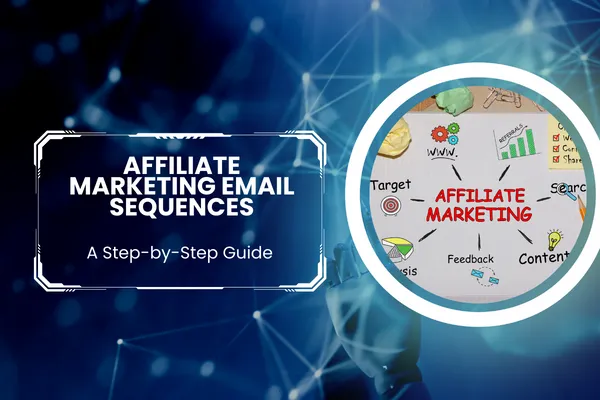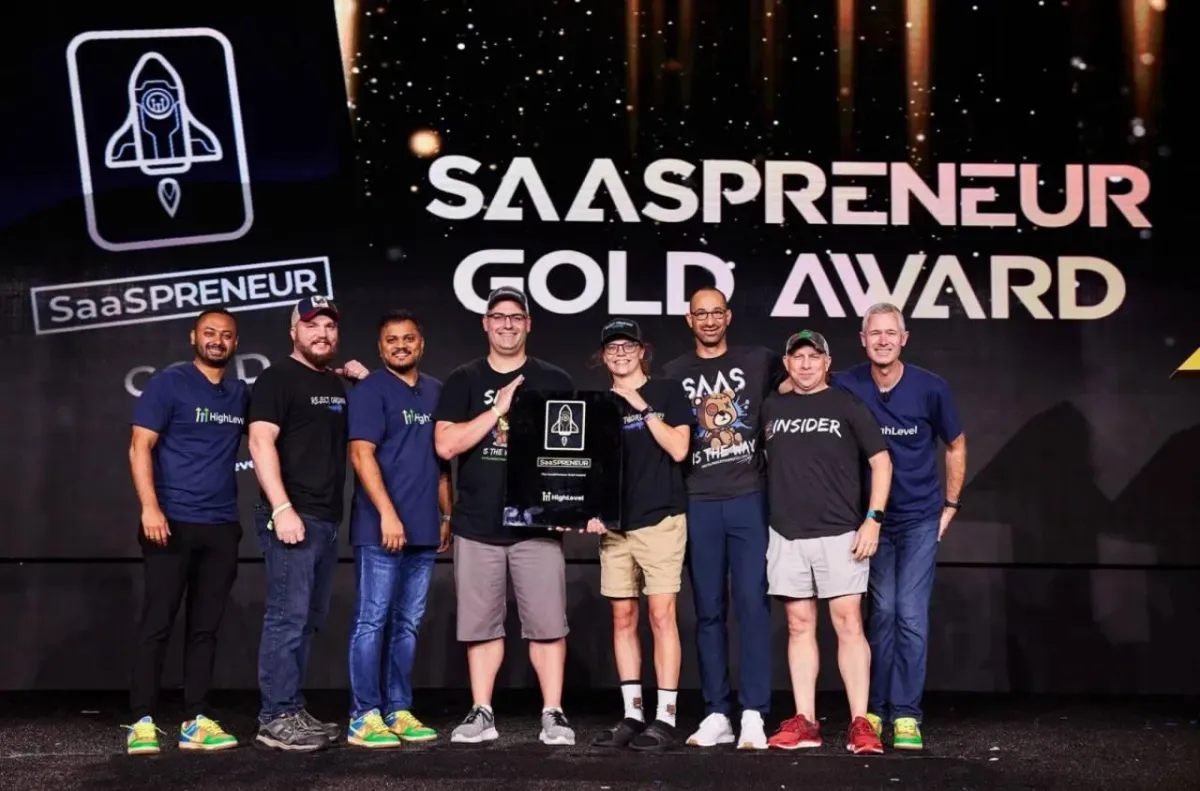The Blog

How To Build A Powerful Affiliate Marketing Email Sequence [In 2023]
When building your affiliate marketing business, not only is it important to have an email list, it’s important to have an automated email sequence to send to that list as well. A well crafted, automated affiliate marketing email sequence can often be the difference between having a sizable passive income stream and constantly having to grind it out on social media. This article will show you how to create an email sequence that continues to earn commissions long after someone has opted into your list.
What Is An Email Sequence?
If you’re reading this article, I assume you have some knowledge of an email sequence already. If you don’t, here is a quick definition. An email sequence is a series of emails that you, the marketer, write up and then send out automatically to everyone who joins your list. You send these automatically by loading the pre-written emails into an autoresponder. An autoresponder is a powerful tool that allows you to keep up with an email list of over 1,000 people and not miss anyone.
These emails are written to your potential customers and are meant to fulfill the promise made in the opt-in box, sell the main item they’re interested in, provide them with additional helpful information, and suggest additional products that may interest them.
Now let’s take a look at how to construct an affiliate marketing email sequence and what a good one looks like.
The First Email
The first email in any sequence should go out immediately after opt-in and it should accomplish two things:
Deliver The “Lead Magnet”
Always fulfill the promise made by the opt-in box on the first email. If you’re offering a checklist on how to lose weight, attach it to the email or include a link to download it. This should be the main focus of the email because you want to start off the relationship on the right foot with your customer. You want to be seen as someone who does what they say they’ll do and you want the customer to feel good about providing their email address in the first place.
Start The Soap Opera Sequence

Russell Brunson’s Soap Opera Doodle
This first email in the sequence is also the first email in what’s known as a “soap opera sequence.” Full Disclosure: I didn’t invent this, I just use it and it works. Russell Brunson teaches this technique in his free book, DotCom Secrets and I highly recommend you check it out. Your soap opera sequence is a series of welcoming emails where you’re not selling your customer right away, but rather building a relationship by telling your story. At the end of the email sequence, your customer will have built a bond with you and is now more likely to open your emails and buy what you have to offer.
The first email in the Soap Sequence sets the stage and lets your customers know what to expect in the coming days. Make sure you don’t just start telling your life story if they’re not ready for it.
2nd Through 5th Emails
These next emails should follow one another on consecutive days and together they complete the Soap Opera Sequence. Ideally, they go out at the same time each day so your customer comes to expect your emails at the same time. I’ve experimented with sending them at different times and open rates plummeted. I can’t tell you what the best time is because every audience differs. Experiment for a while and find out what works for your specific audience. Once you find out what works, make all your emails arrive at that time.
2nd Email – Backstory
This email goes out the next day. In fact, every email in the Soap Sequence goes out on consecutive days. You don’t want gaps in the story while you’re building the initial bond. You want your customers to remember your name and the only way of getting that to happen is by keeping your name in front of them.
The 2nd email is where you start telling your story. You want to explain how you got into the business you’re in and introduce the conflict that caused you to create the product you’re selling or start providing the service you provide. The idea is to bond with and relate to your customers. Explain to them that you were once in the position that they’re in right now and explain the problems you were having. Chances are they’re facing the same problems.
Make sure to begin the email with the most interesting part of the story. If we liken this to the movie “Star Wars,” you want to make sure you start telling the story at the point where Darth Vader cuts off Luke Skywalker’s hand. Start with the tensest moment to hook the audience in, and then backfill once you have their attention. Here’s that scene if you don’t know what I’m talking about:
Imagine you have never seen this movie before and it started with that tense scene. You’re certainly now wondering what events transpired to create that situation. Now that you’re hooked, they can take their time backfilling the boring parts.
Contrast this to setting the stage and building slowly. If you’re doing this in an email, your customer has already closed the email before you get to the interesting part. They don’t have time to read some long possibly boring story from someone they don’t know. Doing things that way would be like starting the same movie at the beginning. Here’s the opening scene of the same movie:
If you didn’t know it was Star Wars, you’d be pretty bored and probably click out quickly. There’s no hook. Make sure your second email starts with the hook, which is the most exciting part.
The second email in the Soap Sequence is not only the backstory, but also the conflict that sent you on this journey. It ends with the wall that you hit. Be sure to tell your customer how you got past the wall in the next email. Leave as big of a cliffhanger as you possibly can so they come back tomorrow to hear the conclusion.
3rd Email – Epiphany
This email is where you explain your “aha” moment, aka your epiphany. You talk about the one thing you did to overcome your problems. However, you don’t just tell the audience up front, you want to lead them down your own path to an epiphany so that they come to the same conclusion you did before you reveal it to them at the end of the email.
If they arrive at the same epiphany you did, it’s a done deal and they will buy your product immediately. However, this is an art form and a skill that will develop over time. It won’t happen right away. However, stick with it because this process is what separates the great marketers from the good ones. If this is done right, your customers will arrive at the conclusion they need to buy your product on their own. All other objections will go away automatically and the need for you to sell is eliminated.
If you haven’t figured this out already, this is the first email where you introduce your offer to your customer. In the next email, you start explaining the benefits the customer may not have thought of.
4th Email – Hidden Benefits
This email is where you explain the hidden benefits of owning your product. These are the benefits that are not readily apparent. For instance, if I were teaching people how to create video content to make money online, the obvious benefit would be that they’ll make money and start generating income while they sleep.
The hidden benefit is that they’ll stop being camera shy and start becoming okay with hearing their own voice in recordings. This will give them increased confidence and increase their momentum in their pursuit of starting their own business.
Start listing out the benefits of owning your product or using your service, and the hidden ones start to appear after you’ve listed 8 or 9. This takes some brainpower so don’t get frustrated if you can’t figure this out in 5 minutes.
5th Email – Build Urgency
This is the last email in the opening Soap Sequence. This is where you build urgency and scarcity into your offer. However, you need to build real urgency and scarcity and be truthful or you’ll kill any credibility you’ve already built. If something will be around for a while and is not ending any time soon, don’t say it’s a limited-time offer. Instead, explain something negative that might happen if they wait on buying.
This is another art form that you will develop in time. Again, don’t fret if you don’t nail it right away.
6th Email and Beyond

From here, you’re on your own, so good luck. I’m kidding. . . sort of. At this point in your email sequence, there is no prescribed “best practice” per se. Your email sequence can be as long or as short as you’d like it to be. However, the longer it is, the more money you can make and the less hands-on you have to be.
Purposes of These Emails
The first 5 emails are meant to build a bond and sell the offer your customer originally signed up for. Once this is done, you can stop here if you’d like, but the heavy-hitting affiliate marketers use this point as an opportunity to sell additional related products and pile on the commissions.
If you have someone who signed up originally for a barbecue grill, you know they may be interested in barbecue grill utensils, charcoal, lighter fluid, a winter cover, a BBQ apron, and countless other grilling accessories. Use the following emails to promote accessories that complement the core offer. You’ll be surprised how the commissions really start to stack up. Here’s Why:
Repeat Business is Easy Business
The first sale with any customer is the hardest. After that, it’s infinitely easier to make additional sales and make more money. The customer already knows, likes, and trusts you if they bought from you before and they’re satisfied with their initial purchase. This means they have very low buying resistance the next time around
However, don’t think that it’s now open season and every email after this one can be a sales email. That will lead to massive unsubscribes and you’ll quickly burn up your list that you worked so hard to build. To nurture your list and turn it into a cash machine after the Soap Sequence ends, follow these rules when planning out the rest of your sequence:
Provide Helpful Information In 3 out of Every 4 Emails
From this point on, your goal should be to send tips and tricks, best practices, and other valuable stuff so they stay subscribed. You want the sales emails to blend in with the rest so they don’t feel like sales emails. To use the Barbecue example, send emails with recipes, grilling tricks, smoking techniques, info on how to know steak is properly cooked, etc. Write as many of these emails as you can because you want your sequence to be mostly helpful info with a sprinkling of sales promotions.
If you write 9 helpful emails, you can really only sell about 3 items. Want to sell more items? Write more helpful emails to offset them. Keep the ratio at 75% help, 25% sales and you’ll be golden.
Sell Relevant Products That Complement Each Other
If you’re promoting barbecues, why would you send an email about socket wrenches? I get that they’re both good father’s day presents, but wrenches have very little to do with barbecues. Keep your offers related to one another, but not competing with one another.
For example, If you’re selling someone on the benefits of a Weber charcoal grill, don’t try to promote a Char-Griller charcoal grill next. Maybe mention a gas grill or accessories. By pitching one product and then a direct competitor, you come across as someone who is just looking to make a sale and doesn’t really believe in the product they’re selling.
If you promote socket wrenches, a good next thing to promote would be the toolbox to keep them in. As long as you keep offering complementary and not competing products, you’ll always have something that’s relevant to show your customer.
Always Reference The Next Email In The Sequence
When I first started doing this, I followed the Soap Sequence process and left cliffhangers that led to the next email. For the first 5 emails, my open rates were in the 35% range. For email 6 and beyond, I reverted back to my own style and wrote each email as a stand-alone email. Guess what happened? My open rates went to 0% immediately!
Always reference the next email you’re going to send them and include the subject line in a P.S. Leave a cliffhanger if you can. It will lead to much higher open rates and keep your customers engaged. An engaged customer is one who buys your stuff.
Email At Least Once a Week
Make sure you set the email frequency to at least once a week. Any more spread out than that and your customer will forget who you are entirely, especially in the beginning. Make sure you stay top of mind with your audience and keep in touch with them. If they forget who you are, the easy repeat sale turns into a first-time sale again.
Bring It All Together
There you have it, a framework to build your killer affiliate marketing email sequence around. If done right, it will cause your customer to bond with you, sell the core product, and sell additional products afterward taking your commissions earned to the next level.
It consists of fulfilling your initial promise, telling your story to sell the core product, and following up with helpful info regularly to stay top of mind and offset the additional sales offers. Good luck and happy writing.
Talk Soon.
Who Is Dom Bavaro?

Content Creator Turned "SaaSpreneur"
After cutting my sales & marketing teeth in the retail car business, I decided to venture out into the world of entrepreneurship in 2017 with an app based car rental business. I marketed that business using social media and had some success, but ultimately it would fail in January of 2020.
After losing that business, I turned to content creation and marketing digital products. After launching several successful information products, I realized that the real staying and compounding power was in selling software as a service. Another pivot in 2022 led to earning the coveted "SaaSpreneur Gold" award from HighLevel in 2023.

⬇️ Helpful Content Here
© DomBavaro.com 2025 . All rights reserved.
25 S Main St #133, Yardley PA 19067
[email protected]
(267) 329-0257

